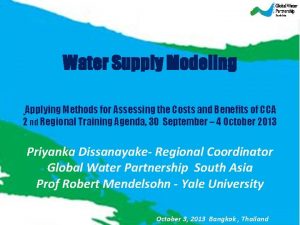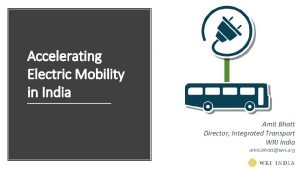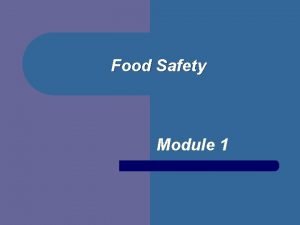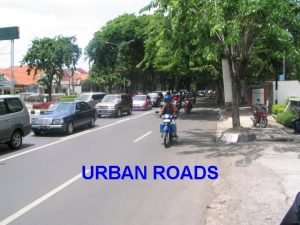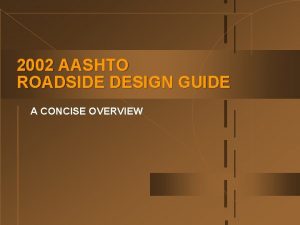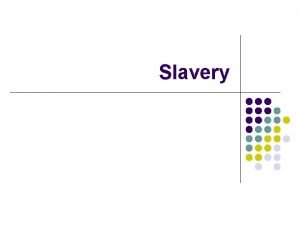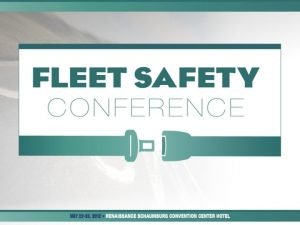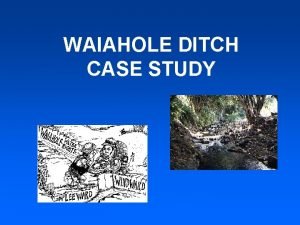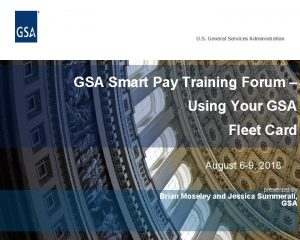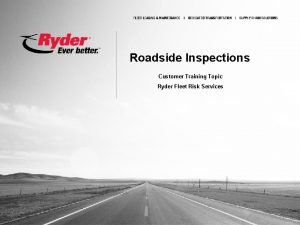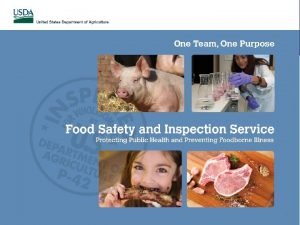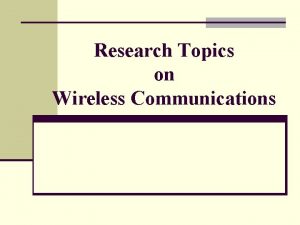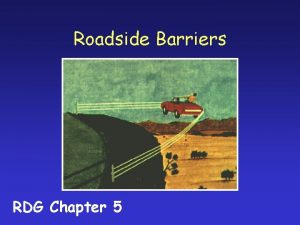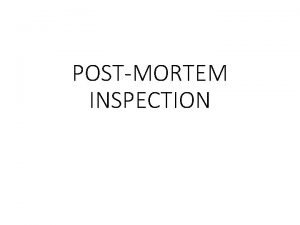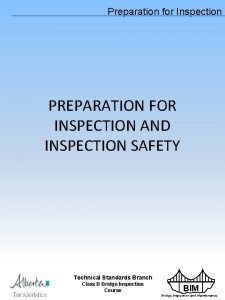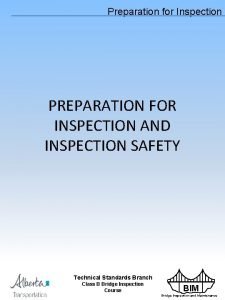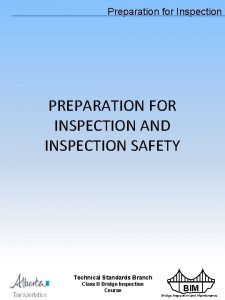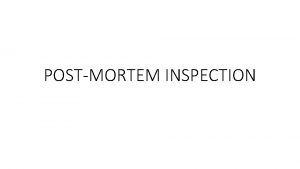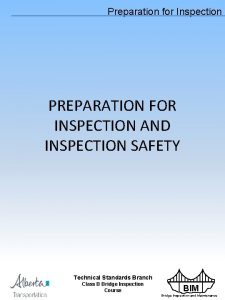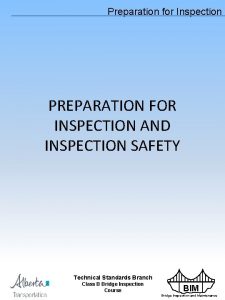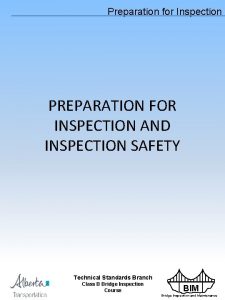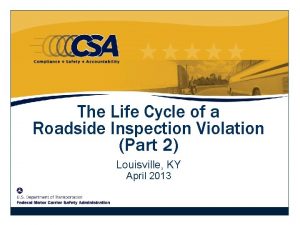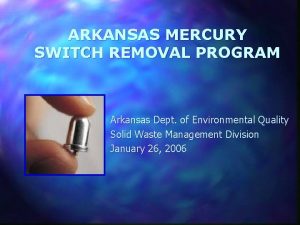Wireless Roadside Safety Inspection WRI Research Program Arkansas















- Slides: 15

Wireless Roadside Safety Inspection (WRI) Research Program Arkansas Trucking Association Maintenance & Technology Council Meeting March 11, 2008 Springdale, AR Jeff Loftus Federal Motor Carrier Safety Administration 202 -385 -2363 jeff. loftus@dot. gov Steve Keppler Commercial Vehicle Safety Alliance 202 -775 -1623, x 106 Steve. K@cvsa. org

The Problem ► 64 percent of all fatal truck crashes have the “Critical Reason” linked to the truck* ► Drivers with reckless driving violations are 325% more likely to have a future crash than drivers without violations ► Truck numbers & mileage grow each year while roadside safety inspection resources remain constant ► The likelihood of a roadside inspection is far less than a truck being weighed 3 million annual truck inspections with a 73% Violation rate (25% OOS rate) 177 million weigh inspections (staffed & WIM) with 515, 587 citations – a 0. 29% violation rate – 82 million weigh inspections (staffed) – 95 million weigh inspections (WIM) * Includes both single and multiple-vehicle fatal truck crashes (Source: LTTCS) 2

Daily Truck Volume— 2035 3

Opportunities for Technology ► Analysis of historical inspection data reveals that a large portion of significant “defects” are limited to a few items ► With the exception of load-securement, most of the key vehicle and operator condition criteria lend themselves to onboard electronic monitoring and diagnostic assessment Driver Violations % Driver OOS Violations Logbook 40. 0% HOS 28. 7% CDL 19. 4% Total 88. 1% Vehicle Violations % Vehicle OOS Violations Brakes 41. 2% Lighting 16. 6% Tires Load Securement Total 9. 4% 15. 7% 82. 9% 4

WRI Program Vision & Goal (The Solution) ► Vision Motor Carrier safety could be improved through dramatic increases in roadside safety inspections due to wireless inspections using proven technologies and processes. Driver and vehicle safety assessments occur frequently enough to ensure compliance while minimizing disruptions to safe and legal motor carrier transportation. ► Goal Demonstrate and measure government and industry benefits and costs of a Wireless Roadside Inspection network across a multi-state region to enable a “go/no go” decision for nationwide deployment. 5

Estimated Costs & Benefits* ► Costs Public sector annual costs of $45 M – $76 M Private sector annual costs of $224 M – $395 M – $533 – $940/vehicle – 420, 000 new vehicles equipped per year * Development and Evaluation of Alternative Concepts for Wireless Roadside Truck and Bus Safety Inspections, FMCSA, 2007. http: //www. fmcsa. dot. gov/facts-research/researchtechnology/report/wireless-inspection-report. pdf 6

Estimated Benefit-Cost Ratio ANNUAL BENEFITS Annual Lives Saved 253 Annual Injuries Prevented 6, 192 Total Annual Benefits ($) $1. 7 B ANNUALIZED COSTS Government—Facility, Equipment, IT, Communications Capital Costs (Amortized over 10 years) $22 M – $34 M Government—Facility, Equipment, IT, Communications O&M Costs $23 M – 42 M Industry—Annual Incremental CMV Costs (Based on 420, 000 units/yr) ($533 - $940/CMV) $224 M – $395 M Total Annualized Cost $269 M – $471 M BENEFIT/COST RATIO High – Low Average 6. 17: 1 – 3. 51: 1 4. 84 : 1 8

Additional Motor Carrier Benefits* ► Pre. Pass Pre-clearance Weigh Station bypass system benefits (1997 -2007) ► Fleets enrolled in Pre. Pass saved over 10 years 20 million hours in avoided delay 120 million gallons of fuel $1. 1 billion in operational cost savings (assuming $5 per stop) * Source: Heavy Vehicle Electronic License Plate (HELP), Inc. , www. cvo. com 9

Program Details ► Demonstration of real-time and automated safety compliance checks • • Driver data (ID, license status, log info) Truck & bus data (lights, brakes, tires) Slow & highway speeds Fixed & mobile inspection units ► Program Status • 2005 -6: Proof-of-concept test: successful • 2007 -9: Pilot test phase • Multiple comm. paths • Back office integration • Interface refinement • Draft performance specifications 10

Conceptual Safety Data Message Set (SDMS) Contents Identifiers Electronic On-Board Recorder (EOBR) Data Driver license jurisdiction and ID Vehicle identification number (VIN) Vehicle state and plate Motor carrier/coach USDOT number Shipping document ID Driver’s Log (Duty Status + Location of Duty Status Change over time) Vehicle Status Vehicle Measures Brakes Tire pressure Vehicle position Weight Lighting Safety belt Data Bus: SAEJ 1708/SAEJ 1587, SAEJ 1939 Additional Vehicle Measures or Status Cargo (incl. Hazmat) Collision warning Container Coupling Driver performance Emissions Exhaust system Fuel system Steering Suspension Trailer Wheels Wipers Other 11

WRI Phase & Schedule 2006 2007 2008 2009 2010 2011 2012 Phase I: Concept Development & Verification Phase II: System & Strategy Definition One Location One Vehicle to Roadside Phase III: Pilot Test Finalize Deployment Strategies & Impacts Corridor Several Vehicles Alternate Technologies Multiple communication technologies Roadside to Safety Data Field Operational Test Deploy WRI Program POC Test Multi-Corridor/Jurisdiction Fleet Selected Technologies Full Network Go / No Go Decision Point 12

WRI Program Next Steps ► Carry out pilot test(s) Feasibility and capacity of technologies & communications options User Interfaces and back office processes Connections to state/federal databases SDMS creation and use ► Refine Concept of Operations / Architectures ► Explore and understand interdiction strategies ► Update analyses (cost benefit, business case, regulatory impact) ► Outreach and collaborate with stakeholders/partners ► Coordinate/collaborate with other efforts & programs (Compass, CSA 2010, Customs, Homeland Security, etc. ) 13

Questions-Discussion ► What diagnostic/fleet management elements should be included in the Safety Data Message Set (SDMS) to give it dual use? ► Are any elements in the SDMS problematic? ► Are there other communication paths / technologies that should be investigated? ► What incentives would help voluntary participation? Why should fleets provide driver/vehicle-specific data to gov’t? What should they receive in return? 14

Questions-Discussion ► Are there any barriers/issues that you see to WRI? ► What are key measures you are looking for when determining ROI? ► When you invest in technology/capital expenditures, what is the expected payback period? 15

Thank you! Jeff Loftus Federal Motor Carrier Safety Administration 1200 New Jersey Avenue, SE Washington, D. C. 20590 202 -385 -2363 phone 202 -385 -2433 fax jeff. loftus@dot. gov, e-mail www. fmcsa. dot. gov, URL Steve Keppler Commercial Vehicle Safety Alliance 1101 17 th Street, NW, Suite 803 Washington, DC 20036 Ph: (202) 775 -1623 x 106 Cell: (443) 812 -1298 Fx: (202) 775 -1624 E-mail: Steve. K@cvsa. org Url: www. cvsa. org
 Wri
Wri Amit bhatt wri
Amit bhatt wri What are wireless devices and the wireless revolution
What are wireless devices and the wireless revolution Food safety management arkansas
Food safety management arkansas Urbansubarban
Urbansubarban Roadside design guide
Roadside design guide Cotton on the roadside cotton in the ditch
Cotton on the roadside cotton in the ditch Brays roadside market
Brays roadside market Nsd roadside
Nsd roadside Roadside ditch commercial
Roadside ditch commercial Gsa fleet drive thru
Gsa fleet drive thru Ryder roadside
Ryder roadside Roadside drug testing nsw
Roadside drug testing nsw Food safety and inspection service definition
Food safety and inspection service definition Bob brodersen
Bob brodersen Wireless communication research topics
Wireless communication research topics
